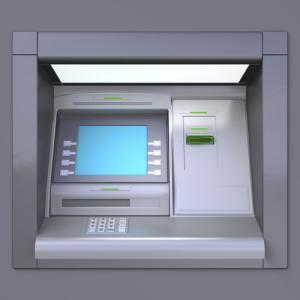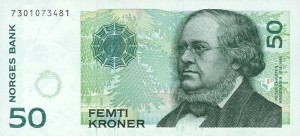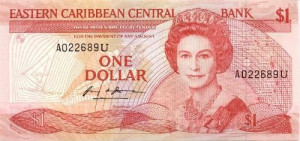If space allowed, I would add a subhead to the above headline:
“If you’re anything like me.”
Yes, as much as I’ve traveled, I often mess up on one particular day of each overseas trip — the day I arrive. I’m betting I’m not the only one.
There are excuses, of course.
Often having flown overnight to make my overseas destination, I’m tired and often a bit disoriented when I get there.
And sometimes, in the rush to get things done before a trip abroad, I forget to do the most elemental homework on my destination — such as checking the currency exchange rate.
When my wife and I arrived in St. Lucia last month for the start of a Caribbean cruise, we found the exchange window at the airport closed, so we ended up in the town of Rodney Bay with no East Caribbean dollars, as the local currency is called. (The taxi driver from the airport gladly took U.S. dollars.)
Heading to the nearest ATM, I inserted my bank debit card and was faced with the question of how much money to withdraw — in East Caribbean dollars. Having no clue what they were worth, I selected $50.
Big mistake. I later learned the exchange rate was one U.S. dollar to 2.7 East Caribbean dollars, so I had selected the equivalent of U.S. $18.50 — minus a hefty local bank fee of $4.95 (fortunately in EC dollars), to which my own bank tacked on another U.S. $1 fee. So I ended up spending around U.S. $3 to net around U.S. $15.
That didn’t get us past the appetizer round in the restaurant we went to, so I quickly hit another ATM, this time selecting much more EC currency — minus, of course, yet more hefty fees.
A rookie mistake, but hardly my first.
On our first night in Norway several years ago, having arrived in Bergen after two flights and feeling jet-lagged, I left an oversized tip at a restaurant because I only had large bills in the local currency, the Norwegian krone. (As ATMs often do, mine had dispensed only a few large bills and I had failed to get smaller change.)
In what may have been a first for me, the restaurant owner returned the tip, saying it was much too large and that tipping wasn’t expected anyway — so the incident turned out to be more embarrassing than costly. After several dozen trips to Europe, I should have known better.
The challenges begin when you arrive at your destination airport, again often tired and disoriented. In many countries around the world, you’re greeted by a phalanx of taxi drivers, some legit and some not, all vying for your business.
If you go with the most aggressive, because you’re feeling assaulted and just want to get out of there and to your hotel, you’re risking being seriously overcharged by a driver without a meter.
And when the driver asks if this is your first visit to [name the place], your inclination is to tell the truth and say “yes” (assuming it is). That’s your second mistake, because the driver then knows that you probably know very little about the most efficient route to take into town, thus potentially driving up the rates even more.
And yes, I speak from experience — this has happened to me on several occasions.
When you reach your hotel, if someone helps with your luggage or insists on showing you the room, you’re then faced with the question of how much to tip. Again, if you have nothing but large bills or no local currency, you’re liable to tip too much.
And when you go out to eat that first night, if you don’t know the local customs on tipping — or don’t notice that the gratuity has already been added to your bill (as it is in most European countries) — you’re liable to leave much more than is needed.
After a good night’s rest and some overdue research into local currencies and practices, I’m usually fine by the second day, ready to be a savvy traveler.
But I really have no excuse for not being a savvy traveler from the moment I arrive, even if tired and jet-lagged.
It just takes some simple homework on my destination’s currency exchange rate, tipping practices, and transportation alternatives from the airport, among other things.
My advice is don’t get into unmetered taxis — or at the very least, establish the rate to your hotel in advance with the driver, so there are no misunderstandings. Make sure the amount agreed upon is in the currency you’re carrying and that you know its value.
Learn a few words in the local language for saying “No thank you” or “I’m not interested” to touts and overly aggressive taxi drivers or souvenir salesmen.
Keep a tight grip on your wallet, purse, passport or other valuables — you’re most vulnerable to petty thievery when you’re tired and disoriented. Don’t leave your valuables on the taxi seat — you may forget them. (This happened to a friend of mine, who lost her passport and all her cash.)
And finally, look like you know what you’re doing and where you’re going, even if you don’t.
And next trip, I’ve resolved to follow these rules as well.
Readers: You can subscribe to my blog and get notification of every post by simply typing in your email address and clicking on the blue Subscribe button or downloading my free report, How to Ride the Coming Wave of Boomers. Thanks!
















4 Responses to The Travel Day You’re Most Likely to Mess Up